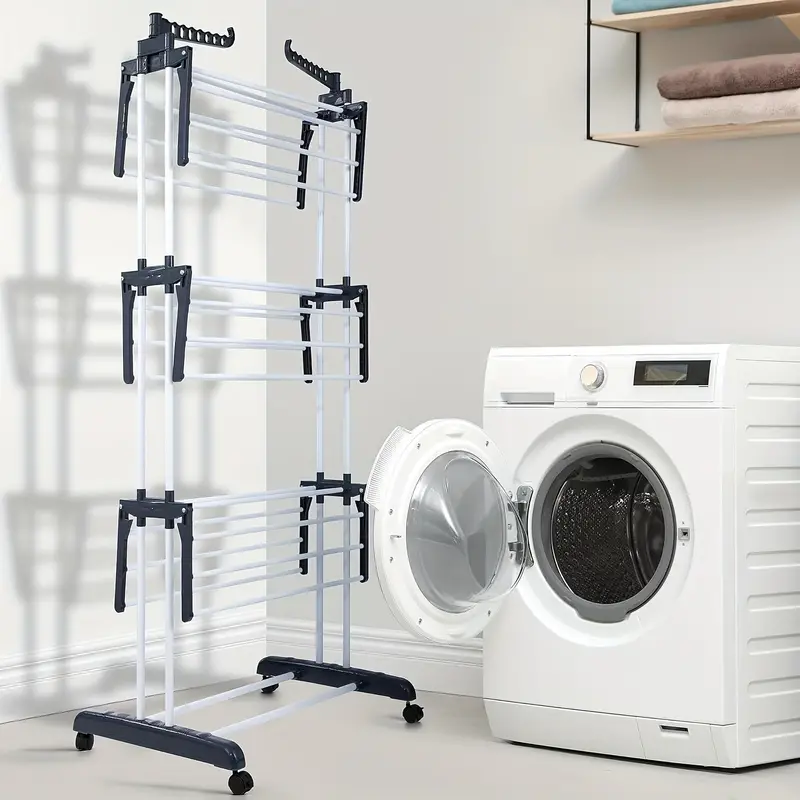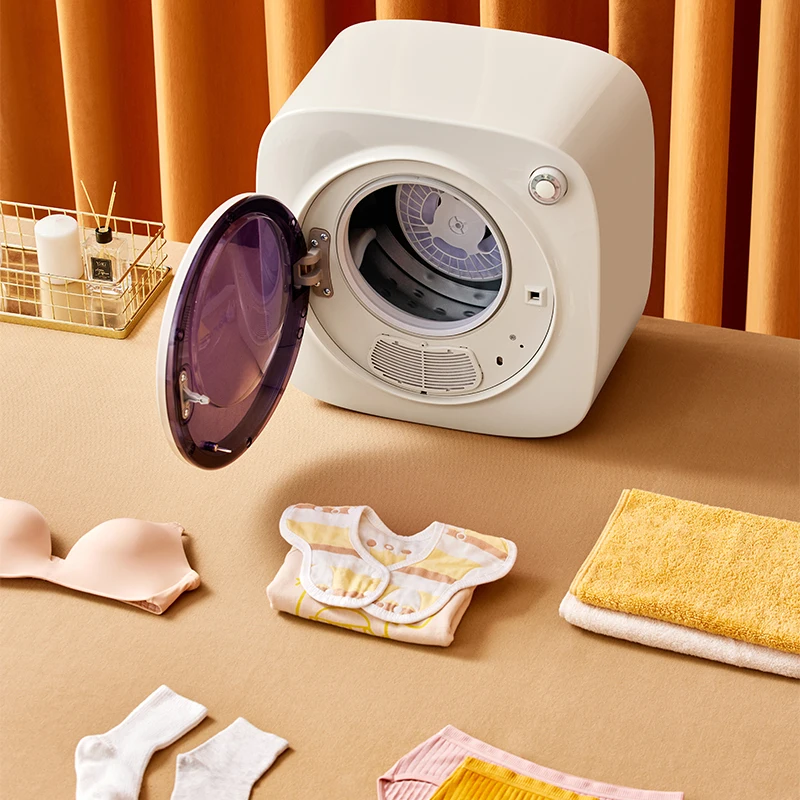Typical Drying Time Range for Clothes
When considering how long a dryer takes to dry clothes, the typical range varies. Most dryers will complete a cycle in about 30 to 45 minutes. However, this is an average estimate. Some loads may dry in as little as 15 minutes, while others, especially larger or denser items, may take upward of an hour.

Factors Affecting Drying Time
Several factors can cause variations in drying time in your appliance:
- Load Size: A larger load will take longer to dry. It’s crucial not to overload the dryer.
- Fabric Type: Different fabrics have unique drying times. Delicates dry quicker than heavy towels.
- Moisture Level: Very wet clothes demand more drying time than those spun well in a washer.
- Dryer Settings: Each dryer comes with settings tailored for various loads and fabrics; using the right one is key.
- Ventilation: Adequate airflow is essential. Blocked vents can lead to longer drying times.
- Dryer Maintenance: Regular cleaning of lint filters and inspections can affect how well and quickly a dryer works.
By understanding these factors, you can optimize your drying process for speed and efficiency, ensuring your laundry routine is as effective as possible.
Understanding Dryer Load Capacity
When it comes to drying clothes, understanding your dryer’s load capacity is crucial. Dryers are designed to handle specific amounts of laundry at a time to ensure efficient and even drying. Overstepping this capacity can lead to a host of issues that will not only slow down the drying process but also potentially shorten the lifespan of your machine.
It’s important to consult the manufacturer’s guidelines for the correct load capacity. This information is usually detailed in the user’s manual and can help you gauge the maximum amount of laundry your dryer can handle per cycle.
Impact of Overloading on Drying Efficiency
Overloading your dryer can significantly impact its drying efficiency. Here’s how an overloaded dryer can cause problems:
- Restricted Airflow: A packed dryer leaves little room for air to circulate, which is necessary for moisture to evaporate.
- Increased Wrinkling: Clothes need room to tumble freely to reduce wrinkling. Overloaded dryers hinder this process.
- Longer Drying Times: With limited air circulation, clothes take longer to dry, which may require additional cycles.
- Energy Waste: Longer drying times and extra cycles mean higher energy consumption.
- Wear and Tear: Overloading puts extra stress on the dryer’s components, leading to quicker wear and potential malfunctions.
To avoid these issues, sort your laundry into batches that match your dryer’s capacity. By doing this, you not only improve drying efficiency but also extend the life of your appliance. When learning how long does a dryer take to dry clothes, consider the capacity guidelines to ensure your laundry day runs smoothly and efficiently.
The Role of Fabric Types and Weight
The role of fabric types and weight is crucial when determining how long a dryer will take to dry clothes. Lighter materials such as synthetics or thin cotton can dry within 15 to 30 minutes. Heavier textiles, like denim or thick wool, may need up to an hour or more. Always categorize your laundry by fabric weight before starting a dry cycle for optimal drying times.
Adjusting Drying Times for Different Materials
Here’s how you can adjust drying times for various materials:
- Thin Cotton and Synthetics: Set the dryer for a shorter cycle; they dry faster.
- Heavy Towels and Denim: Choose longer drying times or specific settings designed for bulky items.
- Delicates: Use low heat or air-dry options to prevent damage.
- Mixed Loads: It’s best to separate items by weight. If mixed, select a medium cycle and check periodically.
Understanding these differences and adjusting settings accordingly can help prevent over-drying or under-drying your clothes.
 Troubleshooting Long Dryer Times
Troubleshooting Long Dryer Times
If your clothes are taking too long to dry, it’s time to troubleshoot. Long dryer times can be frustrating and can also waste energy. Identifying and fixing the underlying issues can help you get your laundry routine back on track.
Common Issues and Solutions for Inefficient Dryers
Several common problems might be causing your dryer to work inefficiently. Here are some issues and how to fix them:
- Overloaded Drum: Do not fill the dryer too full. Keep loads to a size that allows clothes to move freely.
- Blocked Vents: Check for lint buildup. Clean the lint filter after every load, and check the exhaust venting outside the dryer.
- Incorrect Settings: Use the appropriate settings for your load. Heavy fabrics need more heat, while delicates require a gentle cycle.
- Clogged Lint Filter: A clean lint filter is crucial. Remove lint after every cycle to maintain airflow and drying efficiency.
- Worn-out Parts: Parts like the heating element or thermostat may wear out. Replace them if needed.
- Old Dryer: Sometimes, the problem is with the machine’s age. Consider upgrading to a new, more efficient model.
By taking these steps, you can often resolve slow drying times and extend the life of your dryer. If problems persist, seeking professional help may be the best course. Maintaining proper dryer function is key for efficient laundry days.
Maximizing Dryer Efficiency
Boosting your dryer’s performance can save you time and energy, leading to faster drying times.
Tips and Tricks for Faster Drying
To dry your clothes more quickly in a tumble dryer, consider the following strategies:
- Check Loads Before Drying: Towels and lighter fabrics should dry separately for optimal speed.
- Use Dryer Balls: These increase airflow among clothes, leading to quicker drying.
- Regularly Clean the Lint Filter: Doing this improves airflow and efficiency. Clean after every load.
- Spin Clothes Well: Extra spinning in the washer removes more water. This cuts down on dryer time.
- Don’t Overload: Stick to the dryer’s capacity to ensure clothes have space to tumble.
- Use High Spin Speed in Washer: This will extract more water, reducing drying time.
By implementing these tips, you can help ensure that your clothes come out dry much faster, making your laundry process more efficient.
Advanced Drying Technologies
As dryers evolve, manufacturers introduce advanced technologies to enhance drying efficiency.
Innovations in Dryer Design for Speedy Results
To reduce drying times, new dryer models come with remarkable features. Features include:
- Heat Pump Technology: This recycles hot air within the dryer, saving energy and speeding up drying.
- Sensor Drying: Sensors detect moisture levels and adjust drying times automatically, preventing over-drying.
- Steam Option: Steam can relax wrinkles and refresh clothes, reducing the need for long cycles.
- Smart Functions: Some dryers connect to smartphones, allowing users to monitor and control cycles remotely for optimal drying times.
- Eco Modes: These settings adjust the drying process to use less energy while still achieving quick results.
By integrating such innovations, dryers not only cut down on how long they take to dry clothes but also improve overall energy efficiency and fabric care. When selecting a dryer, consider these advanced features for the best performance.
Maintaining Your Dryer for Optimal Performance
Proper upkeep of your dryer is vital for its best performance. Just like any other appliance, a well-maintained dryer works more efficiently and lasts longer. Keeping your dryer in top shape also ensures that clothes dry quickly, which can save you both time and energy, leading to lower household running costs.
Regular Maintenance and Cleaning Tips
To keep your dryer running smoothly, follow these simple maintenance and cleaning tips:
- Empty the Lint Filter: Do this after every load to maintain good airflow.
- Inspect the Dryer Hose: Make sure it’s not kinked or blocked to prevent fire hazards.
- Clear the Vent: Check the outside vent occasionally and remove any lint or debris.
- Wipe the Interior: Use a damp cloth to clean the inside drum of the dryer occasionally.
- Check the Seals: Ensure the door seal is tight to keep heat from escaping.
- Balance the Dryer: Make sure your dryer is level to avoid excess wear on components.
- Schedule Professional Inspections: Have an expert check your dryer once a year.
By incorporating these routine checks and cleanings into your laundry habits, you can significantly enhance how long your dryer takes to dry clothes, and you’ll likely dodge costly repairs or early replacement expenses.
 The Importance of Choosing the Right Dryer
The Importance of Choosing the Right Dryer
Selecting the right dryer is key to efficient laundry. The perfect dryer fits your lifestyle and laundry demands. It’s not just about drying clothes quickly. It also involves conserving energy, preserving fabric quality, and aligning with your household constraints.
Selecting a Model that Meets Your Needs
When you’re in the market for a dryer, consider these points to find the ideal model:
- Size and Capacity: Match the dryer’s capacity with your average laundry load.
- Type of Clothes: Think about the types of clothes you often wash. Heavy fabrics need robust dryers.
- Energy Efficiency: Look for models with high energy ratings to save on bills.
- Features: Decide which features like sensor drying or steam cycles could benefit you.
- Budget: Determine how much you want to spend and find the best dryer within that range.
- Space: Ensure the dryer fits in the designated area in your home.
- Warranty and Support: Check the warranty period and customer support options.
By carefully considering these factors, you can invest in a dryer that suits your specific drying needs and contributes to the efficiency of your laundry routine.
